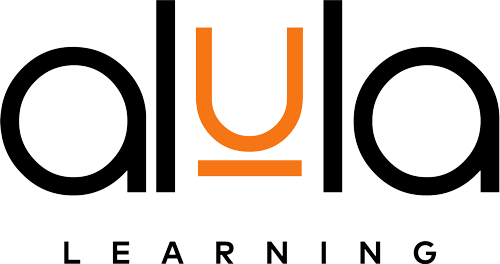
Top Learning Design Trends to Watch for in 2025: The convergence of technology, innovation, and learner needs has revolutionized how knowledge is shared and absorbed today. As we approach 2025, staying ahead of emerging trends in learning design is vital for educators, instructional designers, and organizations.
Before we go into the details of these transformative trends to expect in 2025, we have an exciting opportunity for you! Alula Learning’s Training Program is your gateway to mastering cutting-edge learning design strategies. Don’t miss this chance to take your skills up a notch. Register your interest here.
Top Learning Design Trends to Watch for in 2025
1. Gamification Beyond Points and Badges
Gamification remains a powerful tool in learning design, but its application is evolving beyond simplistic rewards like points, badges, and leaderboards. In 2025, we’ll see a deeper integration of gamification into the narrative structure of courses, where storytelling becomes a central element.
Learners will not just complete tasks; they’ll embark on missions, solve real-world problems, and engage in collaborative challenges. Advanced AI tools will enable personalized gamified experiences, adapting challenges to individual skill levels and learning progress.
Key takeaway: To stay competitive, learning designers must master advanced gamification techniques that engage learners on cognitive, emotional, and social levels.
2. AI-Powered Personalized Learning
Artificial Intelligence (AI) is no longer a buzzword, it’s a now a game-changer in education. AI-driven systems can analyze learners’ behavior, preferences, and performance to deliver tailored content that meets their specific needs.
Expect adaptive learning platforms to become the norm, offering personalized pathways for learners. AI will also enable real-time feedback, guiding learners more effectively and freeing up educators to focus on higher-level mentoring.
Key application: Incorporating AI into learning design can enhance engagement and outcomes by ensuring content is relevant and delivered at the right pace for each learner.
3. Microlearning for Time-Constrained Learners
In a world where attention spans are shrinking, microlearning continues to thrive. Bite-sized content designed for on-the-go learning will dominate in 2025. However, microlearning will go beyond static modules; expect interactive formats such as quick simulations, quizzes, and short immersive videos.
This trend aligns perfectly with busy professionals seeking knowledge without committing to lengthy courses.
Pro Tip: Modular training designs that allow learners to pick and choose specific microlearning topics will be a significant draw.
4. Augmented Reality (AR) and Virtual Reality (VR)
AR and VR are reshaping how we interact with learning materials. By 2025, these technologies will be more accessible and integrated into training programs across industries.
- AR: Overlaying digital information in real-world settings, such as using AR glasses during a medical procedure for real-time guidance.
- VR: Simulating real-world environments for immersive learning experiences, such as virtual internships or crisis management training.
What to Watch: As AR and VR tools become affordable, they’ll redefine experiential learning, making it more interactive and impactful.
5. Collaborative Learning in Virtual Spaces
With remote work and learning becoming permanent fixtures, virtual collaboration tools are gaining prominence. Learning platforms are integrating features like virtual whiteboards, breakout rooms, and real-time document collaboration.
In 2025, we’ll see these tools evolving into metaverse-like platforms, where learners and instructors can interact in shared virtual spaces. These environments will foster teamwork, problem-solving, and innovation.
Why it matters: Collaborative learning enhances critical thinking, communication, and teamwork skills, preparing learners for real-world challenges.
6. Data-Driven Learning Design
Analytics is becoming an integral part of learning design. By tracking learner interactions, time spent on tasks, and assessment results, designers can refine courses to maximize effectiveness.
Learning analytics platforms will evolve to provide predictive insights, allowing designers to proactively adjust content and strategies based on trends.
Action Point: Designers must become adept at interpreting data and using it to enhance learner experiences.
7. Inclusion and Accessibility
Diversity, Equity, Inclusion, and Accessibility (DEIA) will continue to drive innovation in learning design. In 2025, more organizations will prioritize designing content that accommodates various learning needs, including neurodiverse learners and those with disabilities.
This trend also aligns with the rise of Universal Design for Learning (UDL), which advocates for flexible learning environments that cater to all.
Design Tip: Use accessible technologies like screen readers, captions, and adaptive interfaces to ensure inclusivity in your learning materials.
8. Hybrid Learning Models
Blended learning models combining online and in-person elements are here to stay. In 2025, hybrid learning will shift towards greater flexibility, allowing learners to seamlessly switch between modalities based on their schedules and preferences.
For example, a training program might offer live sessions, self-paced modules, and on-demand resources in one integrated platform.
Why it’s critical: Hybrid learning provides the best of both worlds, catering to diverse learner needs while maintaining engagement.
9. Focus on Soft Skills
As automation and AI take over routine tasks, soft skills like critical thinking, emotional intelligence, and creativity are becoming indispensable.
Expect a surge in courses designed to teach these skills through scenario-based learning, simulations, and peer feedback systems. Soft skills training will be woven into technical courses, ensuring a holistic approach to learning.
Takeaway: Incorporate soft skills training into your offerings to prepare learners for future job demands.
10. Sustainability in Learning Design
Sustainability isn’t just a corporate buzzword; it’s influencing education too. Green learning design practices, such as reducing reliance on paper-based materials and leveraging energy-efficient platforms, will gain traction.
Additionally, courses focused on sustainability topics will be in high demand as businesses and governments prioritize climate literacy.
Forward-Thinking: Integrate sustainability into both content delivery and subject matter to align with global priorities.
11. Lifelong Learning Ecosystems
The concept of lifelong learning is gaining momentum, and in 2025, we’ll see organizations and institutions creating ecosystems that support continuous education.
These ecosystems will include microcredentials, stackable certifications, and pathways for upskilling and reskilling throughout a learner’s career.
Next Steps: Embrace a learner-centric approach, creating programs that grow with your audience’s evolving needs.
12. Social Learning through Communities
Learners thrive in communities where they can share experiences, challenges, and solutions. Social learning platforms will continue to grow, offering forums, live discussions, and peer mentoring opportunities.
In 2025, expect AI-driven community management tools that recommend discussions, connections, and resources based on individual learner profiles.
Design Insight: Foster active learner communities within your programs to enhance engagement and retention.
Elevate Your Learning Design Skills Today!
These trends are redefining the future of learning design. To stay ahead, you need to understand and apply them effectively. That’s where Alula Learning’s March 2025 Training Program comes in.
Our training is tailored to equip you with the knowledge and skills to thrive in this dynamic field. From mastering gamification to designing accessible courses, this program has it all. Register your interest now and take the first step toward transforming your career.
Conclusion
2025 promises to be an exciting year for learning design, with trends emphasizing personalization, interactivity, and inclusivity. By staying informed and embracing these advancements, you can create impactful learning experiences that resonate with modern learners.
Don’t just follow these trends, lead the charge. Join Alula Learning’s Training Program for Professionals and become a pioneer in innovative learning design. Sign up today!
